
Wickliffe Mounds is a prehistoric, Mississippian culture archaeological site located in Ballard County, Kentucky, just outside the town of Wickliffe, about 3 miles (4.8 km) from the confluence of the Ohio and Mississippi rivers. Archaeological investigations have linked the site with others along the Ohio River in Illinois and Kentucky as part of the Angel phase of Mississippian culture. Wickliffe Mounds is controlled by the State Parks Service, which operates a museum at the site for interpretation of the ancient community. Listed on the National Register of Historic Places, it is also a Kentucky Archeological Landmark and State Historic Site.

The Ouray City Hall and Walsh Library are a pair of buildings in downtown Ouray, Colorado, United States. Located on 6th Avenue between 3rd and 4th Streets, they are together listed on the National Register of Historic Places.

The Kolomoki Mounds is one of the largest and earliest Woodland period earthwork mound complexes in the Southeastern United States and is the largest in Georgia. Constructed from 350CE to 600CE, the mound complex is located in southwest Georgia, in present-day Early County near the Chattahoochee River.

The Hammerstein House is a historic house located at 1520 Polk Street in Hollywood, Florida, United States.
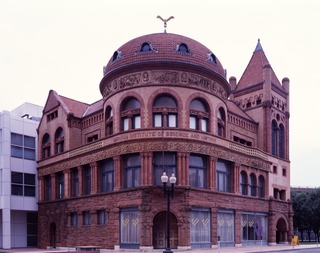
The Barnum Museum is a museum at 820 Main Street in Bridgeport, Connecticut, United States. It has an extensive collection related to P. T. Barnum and the history of Bridgeport, and is housed in a historic building on the National Register of Historic Places.
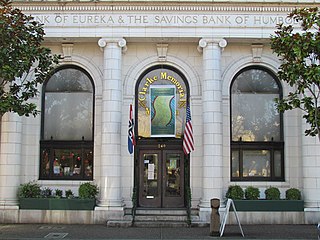
The Clarke Historical Museum in Eureka, California contains the area's premier collection of California North Coast regional and cultural history. The facility houses a Native American wing, Nealis Hall, which features an internationally recognized collection of basketry, regalia, stoneware, implements, and other objects indicative of the culture and creativity of local and regional Native American groups including the Wiyot, Yurok, Karuk and Hupa Tribes. The Eureka Visitors Center is located in the main hall of the museum. The Clarke Museum is a 501(c)3 nonprofit.

The Garst House, also known as the Garst Museum, is an historic building located at 205 North Broadway in Greenville, Ohio, United States. On November 16, 1977, it was added to the National Register of Historic Places. Today it is a local history museum operated by the Darke County Historical Society.

Suffolk County Historical Society Building is a museum and library dedicated to preserving historic artifacts of Suffolk County, New York, as well as other parts of Long Island. It is located at 300 West Main Street as well as Osborn Avenue and Court Street in Riverhead, New York.

The Billings County Courthouse in Medora, North Dakota was built c.1880 and was remodeled in 1913 with architect John Tester. It was listed on the National Register of Historic Places in 1977.

The Joseph T. Smitherman Historic Building, also known by a variety of other names throughout its history, is a historic Greek Revival building in Selma, Alabama. Completed in 1847, it has served many functions in the more than 160 years of its existence. The building was added to the National Register of Historic Places on June 20, 1975, due to its architectural and historical significance. It currently houses the Vaughan-Smitherman Museum, a museum depicting Selma's history.
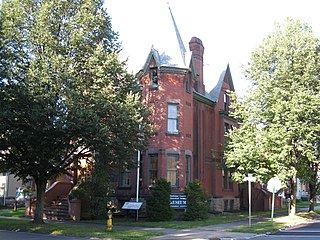
Herkimer County Historical Society is located in the Eckler House which is adjacent to the 1884 Suiter Building, a historic home in Herkimer, Herkimer County, New York. It is a 2+1⁄2-story, wood-frame structure with red pressed brick walls laid in black mortar built in 1884. It features a complex pitched roof of slate with a brick corbelled cornice and terra cotta ornament along the roof edge. There is also an octagonal peaked roof above the corner tower. Built originally as a private home, it was unfinished at the time of its builders death in 1925 and given to the Herkimer County Historical Society who occupied it in 1935. It the mid-1990s the Society built and renovated the adjacent Eckler House and moved its offices into that building. The Suiter building remained the museum and repository for artifacts and ephemera.

The Johnson County Museum of History is a local historical museum located in Franklin, Indiana. The museum is run by the Johnson County Historical Society. The museum officially opened in 1931, under the name "Johnson County Museum." It was organized by the local Chapter of the Daughters of the American Revolution.

Burroughs School, also known as Burroughs Graded School, is a historic school located at Conway in Horry County, South Carolina. It was built in three phases between 1905 and 1923. The earliest portion of the building was built as an elementary school and has three main portions of eleven bays. It features a one-story, hip roof porch supported by six Ionic order columns with Scamozzi capitals. About 1915 a two-story hipped classroom wing was added and in 1923 four classrooms and an auditorium was added to the complex.

The Carroll County Courthouse is a historic county courthouse located at Hillsville, Carroll County, Virginia. It was built between 1870 and 1875, and is a two-story brick building with a gable roof. It features a two-story, pedimented portico in the Doric order. The building is topped by an octagonal cupola. The courthouse was the scene of the famous Hillsville massacre of March 14, 1912, in which five persons, including the presiding judge, were killed in a courtroom battle.
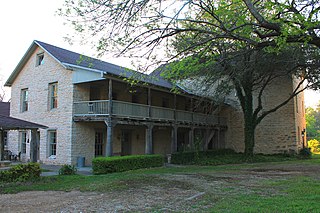
Barnard's Mill is located in Glen Rose, Texas. It was added to the National Register of Historic Places on September 9, 1982.
The Wells County Fairgrounds in Fessenden, North Dakota was listed on the National Register of Historic Places in 1991. The listing included 18 contributing buildings and one other contributing object on 35 acres (14 ha).

The Tooele County Courthouse and City Hall, located at 39 E. Vine St. in Tooele, Utah, was built in 1867. It includes Greek Revival-inspired architecture. It was listed on the National Register of Historic Places in 1983.
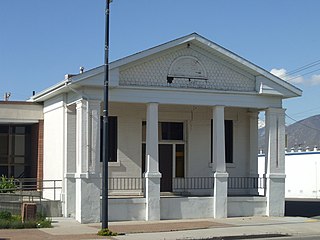
The Tooele Carnegie Library, located at 47 E. Vine St. in Tooele, Utah, was built in 1911 and includes Classical Revival architecture. It was listed on the National Register of Historic Places in 1984.

Strasburg Stone and Earthenware Manufacturing Company, also known as the Strasburg Museum, Steam Pottery, and Southern Railroad Station, is a historic factory building located at Strasburg, Shenandoah County, Virginia. It was built in 1891, and is a two-story, 10 bay brick building originally constructed for the Strasburg Stone and Earthenware Manufacturing Company to make earthenware. It was converted to railroad use in 1913, at which time a one-story pent roof was added. The building is covered with a slate-clad hipped roof surmounted by a hipped monitor. The building served as a station and depot for the Southern Railroad.



















